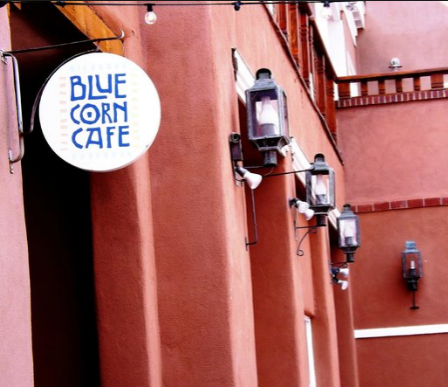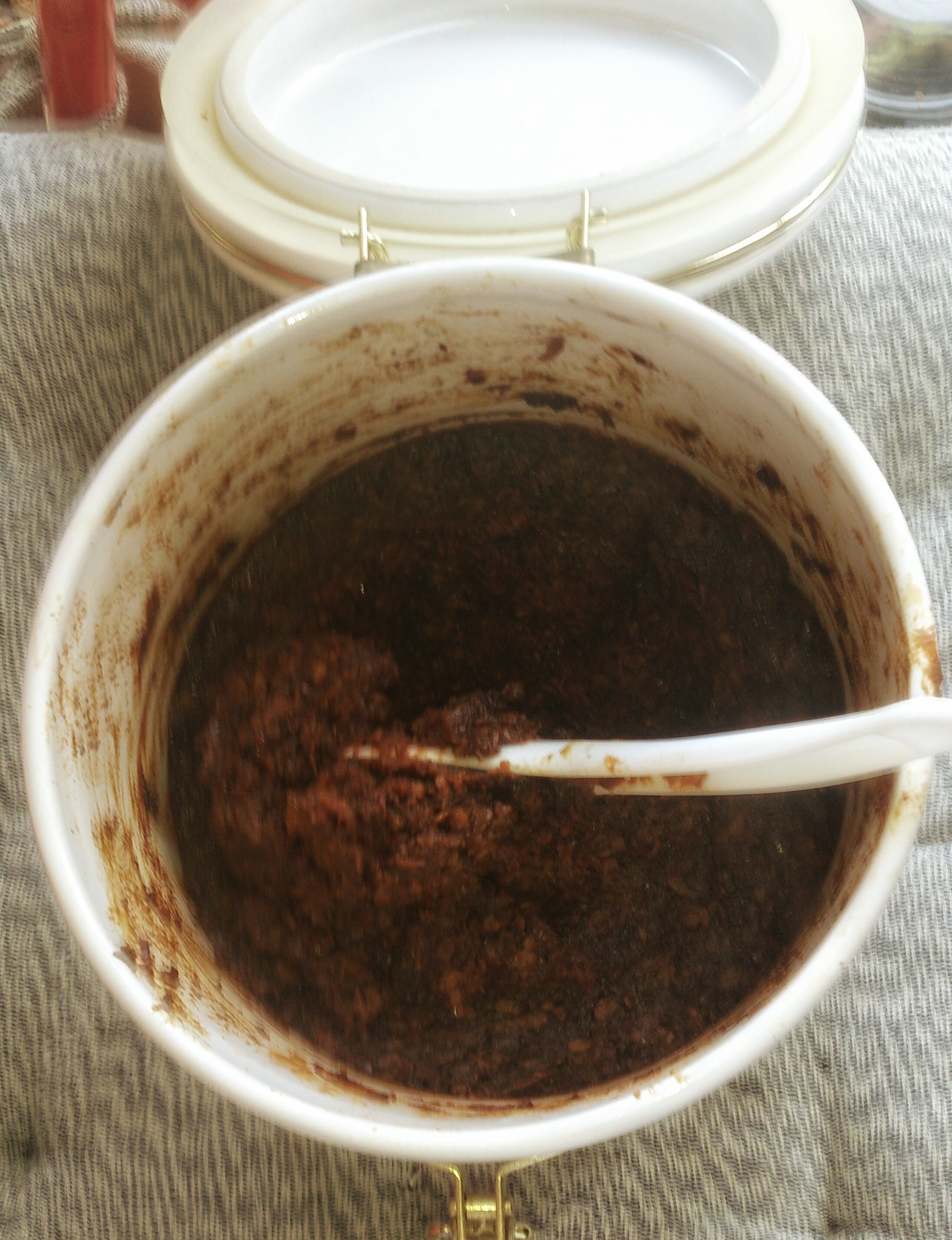Foodie Goodness
 silver
In the beginning there was nothing, and then it exploded.USA, Left coast. Veteran
silver
In the beginning there was nothing, and then it exploded.USA, Left coast. Veteran
The last food thread we had has washed out to sea, so I'd like to start a fresh batch of varied and interesting posts about: Food!
I've never eaten quinoa, but I know those who have and they enjoy it very much. In my emails this morning, I got this newsletter from "The World's Healthiest Foods."
What are the health benefits of quinoa?
Overall Nutrient Richness
Perhaps the most striking health benefit provided by quinoa is its overall nutrient richness. When the nutrient composition of this food is analyzed in depth, the results are unusual and striking. While quinoa can be eaten in the same way as a grain, or ground into flour like is so commonly done with grains, it lacks some important nutritional shortcomings of grains.
One of the shortcomings overcome by quinoa involves its protein content. Most grains are considered to be inadequate as total protein sources because they lack adequate amounts of the amino acids lysine and isoleucine. The relatively low level of both lysine and isoleucine in the protein of grains is what causes these amino acids to be considered as the limiting amino acids (LAAs) in grains. In other words, these LAAs prevent grains from serving as complete protein sources in our diet. By contrast, quinoa has significantly greater amounts of both lysine and isoleucine (especially lysine), and these greater amounts of lysine and isoleucine allow the protein in quinoa to serve as a complete protein source.
In terms of fat content, quinoa once again overcomes some of the shortcomings of most grains. Since it takes nearly 350 calories' worth of whole wheat to provide 1 gram of fat, whole wheat is not generally regarded as a significant source of fat, including essential fatty acids or heart-healthy monounsaturated fats (like oleic acid). By contrast, since it only takes 63 calories' worth of quinoa to provide 1 gram of fat, quinoa is typically considered to be a valuable source of certain health-supportive fats. About 28% of quinoa's fatty acids come in the form of oleic acid, a heart-healthy monounsaturated fat, and about 5% come in the form of alpha-linolenic acid or ALA—the omega-3 fatty acid most commonly found in plants and associated with decreased risk of inflammation-related disease.
Neither quinoa nor any grains qualify as good vitamin E sources in our WHFoods rating system. However, in the case of quinoa, or rating system does not do full justice to the fact that quinoa contains significant amounts of certain tocopherols (vitamin E family members) largely absent from most grains. For example, one cup of quinoa provides 2.2 milligrams of gamma-tocopherol—a form of vitamin E that has been more closely associated with certain anti-inflammatory benefits in health research. Quinoa is also a good source of RDA nutrients like folate, zinc, and phosphorus in contrast to whole wheat, which does not qualify as a good source in our rating system.
Quinoa is an equally impressive food in terms of its overall phytonutrient benefits. In many Central and South American countries, the leaves of the quinoa plant are valued for their betacyanin pigments, which provide some of their bright reddish shades. But even the seeds themselves can be phytonutrient-rich and can provide significant amounts of antioxidants like ferulic, coumaric, hydroxybenzoic, and vanillic acid.
The antioxidant flavonoids quercetin and kaempferol are also especially plentiful in quinoa. In fact, the concentration of these two flavonoids in quinoa can sometimes be greater than their concentration of high-flavonoid berries like cranberry or lingonberry.
Considered in combination, these diverse nutrient benefits of quinoa give it uniqueness among grain-related foods. For us, this high overall level of nourishment provided by quinoa may qualify as its greatest health benefit.
Anti-Inflammatory Benefits
Most of the quinoa studies that we've seen in this area have been animal studies. However, we believe that the preliminary indications for humans are very promising. Research has shown the ability of daily quinoa intake to lower levels of inflammation in fat (adipose) tissue in rats and in the linings of their intestine as well.
We're not surprised at either of these results because a wide range of anti-inflammatory nutrients is already known to be present in quinoa. This list of anti-inflammatory nutrients includes phenolic acids (including hydroxycinnamic and hydroxybenzoic acids), members of the vitamin E family like gamma-tocopherol, and cell wall polysaccharides like arabinans and rhamnogalacturonans.
Somewhat more controversial in this anti-inflammatory nutrient list are the saponins found in quinoa. Saponins are the bitter tasting, water-soluble phytonutrients found in the outer seed coat layer of quinoa. (More specifically, the saponins found in quinoa are derived from hederagenin, oleanic acid, phytolaccagenic acid, and serjanic acid.) The quinoa saponins have been shown to have both anti-inflammatory and antioxidant properties. However, soaking, boiling, and milling can reduce their presence, and, in general, this reduced presence is usually regarded as a good thing since it can make the quinoa much more enjoyable for most people to eat. In research to date, the relationship between and anti-inflammatory benefits of quinoa and saponin levels has yet to be clarified. However, even though more research is needed in this particular phytonutrient area, the list of anti-inflammatory nutrients in quinoa remains impressive.
Other Benefits
We have yet to see large-scale human studies on intake of quinoa and risk of type 2 diabetes or risk of cardiovascular disease. However, we would expect such studies to show significantly reduced risks. With respect to type 2 diabetes, quinoa simply has too many things in common with other foods known to decrease risk. At the top of the list here would be its fiber and protein content. Quinoa is a good source of fiber—one of the key macronutrients needed for health blood sugar regulation. It also provides outstanding protein quality, even in comparison to commonly-eaten whole grains. Strong intake of protein and fiber are two dietary essentials for regulation of blood sugar. Because chronic, unwanted inflammation is also a key risk factor for development of type 2 diabetes, the diverse range of anti-inflammatory nutrients found in quinoa also make it a great candidate for diabetes risk reduction.
Animal studies have already demonstrated the ability of quinoa to lower total cholesterol and help maintain levels of HDL cholesterol (the "good" cholesterol). While we would expect these results in humans as well, we would also expect the anti-inflammatory nutrients in quinoa to help protect human blood vessels from inflammatory damage. Protection of this kind would also provide reduced risk of many cardiovascular diseases, including atherosclerosis. We expect to see future, large-scale human studies demonstrating the benefits of quinoa for risk reduction in this area of cardiovascular disease.
The antioxidant and anti-inflammatory phytonutrients in quinoa also make it a likely candidate for cancer risk reduction in humans. Given the preliminary animal results involving the digestive tract, risk reduction for colon cancer may turn out to be a special area of interest.
A final area of likely benefit involves decreased risk of allergy—especially for individuals who have adverse reactions to certain grains and seek practical alternatives. Already, several public organizations have recommended quinoa as a substitute for wheat whenever the avoidance of this gluten-containing grain is required. The low-allergy potential of quinoa—coupled with its relatively high digestibility—has also made it a food of special interest in the diet of children and toddlers.


Comments
I eat quinoa regularly. The only negative thing I have to say about it, is that it do get stuck in yer teeth, somewhat...!
I take it you cook it like rice? 20 minutes or so... maybe add more liquid or something, huh?
yes, and I also use stock to cook it in. I also mix it with my roasted barley, which I soak for a half hour in hot water (from the kettle, not the tap). I use it cold in a salad, or hot, as a sub for rice or cous-cous....
The store I work in makes and markets some of the finest, freshest and best salads - to eat on the go, or as a side dish at a table - available.
I can eat well, and royally at work, because their foods and dishes are second to none.
I'm very lucky.
Quinoa, barley, edame beans, and other wonderful fresh veg and fruits form the staples of my diet.
sounds awesome to work in a place that has healthy fresh foods. I learned something about pumpkin seeds. I get my blood tested every so often because I'm on warfarin and they told me to not eat a lot of greens because too much vitamin K interferes with the drug's effectiveness. A couple weeks ago, I bought a small amount of pumpkin seeds because they were on sale and I've never been 'into' them - I got a craving for them and was eating them like they were going out of style - then the next couple of tests showed a really low level and I checked the nutrition values of them and sure enough, they have a goodly amount of vitamin K. So, I've had to back off of them for a while.
@silver. At this time of year when sweet corn is so delicious Its wonderful to eat raw. The bicolor is particularly good this year.
Hi @grackle, is bicolor corn also known as Indian corn? (I'd call it Calico Corn if they let me!)
I remember as a little girl, helping my grandad pick the ears of corn he grew in his modest 'orto' or 'orchard'. (Orto, in Italian, is also the vegetable patch. He grew all kinds of things there, and tended it lovingly every day.) The corn was sweet, crunchy and addictive.... It's important to cook corn virtually as soon as it's picked, because otherwise the sugars turn to starch, and a lot of the goodness disappears.
@silver. Indian corn is most often used as decor on the harvest table during Thanksgiving. The dried cob seems to retain most of its wonderful coloration. Sweet corn that I've eaten is yellow, white or the bicolor available now. Paler yellow with white here and there on the cob.
While on the subject of yummy I happy recall those wonderful sticky buns made by the Amish. There was a small Amish colony at one time in Homestead,Fl. Let the good times roll.
Oh...I forgot that Indian corn is hard (possibly inedible?) or maybe it's poppable?
Here's a much shorter ( ) article from the same place as my OP about a very important thing:
) article from the same place as my OP about a very important thing:
What do electrolytes do in the body and how important is balancing sodium/potassium intake?
Along with sodium, chloride, calcium, and magnesium, potassium is an electrolyte, meaning that it helps to conduct electrical charges in the body. Like all the other electrolytes, our bodies have evolved elaborate systems to control blood levels in a narrow range. This is good news since normal levels of potassium are absolutely critical to life—if potassium levels get too high or too low, the heart and nervous system completely shut down. Luckily, most of us are able to obtain enough potassium from foods to meet our most basic needs. But since just meeting a minimal intake need is not a recipe for health, many people in the United States often fail to obtain optimal amounts of this nutrient, and pay a health cost for it.
This is because Americans fail to regularly eat fresh fruits and vegetables, while eating heavily salted prepared foods. In fact, a recent survey suggests that only about 5% of Americans meet minimal goals for eating fruits and vegetables. If you do not regularly meet these goals, it will be difficult to ensure your potassium intake will be optimal.
It is impossible to understand the role of potassium without addressing sodium as well. Sodium and potassium exist in a partnership, and each important use of potassium requires sodium to maintain balance. Importantly, as average diets in the United States have become depleted in potassium, they have become much more concentated in sodium.
For example, a heavily salted commercial tomato juice—despite containing a potassium rich food like tomato—often contains a ratio of sodium to potassium of more than 2:1. This ratio is not a desirable one! By comparison, our Mushroom, Tomato, and Basil Frittata has a ratio of sodium to potassium of 1:3, a much more health-promoting pattern. In fact, we believe one of the central benefits of the World's Healthiest Foods approach is the way it rebalances sodium and potassium in a manner that is more consistent with good heart and kidney health.
Sunday 8th May - this momma just made 2kg of sauerkraut!
I have to get my cholesterol down so will need to cut back on the ice-cream, just a couple of litres a day will be tough.
Hey, 'Fudge' the cholesterol - Up With Ice Cream!
I've never tried quinoa. I try to avoid corn, seeds and nuts, they're hard on my digestive tract. Does quinoa have a husky surface, or is it more like rice?
Quinoa is a lot like cous-cous, except it has more protein.
corn seeds and nuts don't digest normally, you need to chew them really well. Quinoa isn't really the same, it is a softer grain.
That said, do be careful where you source your quinoa. The Western demand is causing problems for farmers and the land in central and South America. There is always a flip side to the sudden popularity in foods, especially ones farmed in areas that are poor or already environmentally struggling. One of the big problems is that quinoa has long been a staple of the people in the regions where it is a native crop. However, with the huge western demand, the people who relied on it can no longer afford it. As the farmers who farm it make more money, they switch to a more processed diet because they can afford to and then the local people cannot afford the quinoa farmed in their areas and end up resorting to white rice. There is a ton of info on google about it if you care to read more. I'm not saying everyone should stop eating it. Just be aware that so-called superfoods that we jump all over frequently have pitfalls as do most things. And if you haven't noticed, the huge rise in quinoa consumption over the past 5 years or so has done nothing to stem our tidal wave of obesity and unhealthy eating and associated health issues.
I'm into those "zero calorie" noodles, but they took some getting used to, as I found I was cooking them incorrectly!
The instructions on the pack, are hopelessly inadequate...
Take them from the pack, drain, put in a colander, and rinse copiously with cold running water. No, I do mean COPIOUSLY.
Bring a pan of water to the boil, and tip in the noodles. Bring back to a boil, and simmer for 4 - 5 minutes.
Drain well.
Transfer to a good non-stick frying pan/skillet, and stir continually, over a medium heat, to evaporate as much of the water as possible.
Use in stir-fries or noodle soups.
Quinoa comes in different varieties, too. They say red quinoa has more nutrients in it. I like the flavor of it better than regular quinoa.
One easy way to get a lot of potassium without accompanying calories, esp. carbs, is to have zucchini or yellow squash (any yellow squash) a few times/week. Turns out, squashes are very high in potassium.
I have just heard of a 'turmeric latte' for coffee addicts. Recently bought barley cup again. Water I have heard is a good food accompaniment.
I just finished reading an article in todays paper about the new spam museum that recently opened in Austin, Minn. It had previously been located in the Hormel headquarters. My bucket list just keeps on growing. I have found memories of fried spam/velvetta sandwiches.
Just returned from Santa Fe, New Mexico and dined daily on blue corn pancakes, blue corn tortillas, blue corn succotash interspersed with enchiladas, chile rellenos, squash stew, polenta, fried bananas, southwest spicy pinto beans and rice and tomatillo, green and red chile sauces. If blue corn is considered Indian corn, I certainly proved it edible. Even ate at The Blue Corn Cafe.

Did you turn blue, @IronRabbit? It's been too long since I had chile relleno!
For some reason, the term 'pebbledashed porcelain' flitted across my mind...
Ah! I just learned a new word! I believe it's called stucco around here.
This type of visceral reaction is common in the U.S., apre Taco Bell which is light years difference from Southwestern elevated cuisine....nevertheless, point taken. And, only my brown eyes turned blue @silver.

Wow, to have teeth again...
Almost forgot about this thread, but then I got an email with an interesting little bit about avocados - which are in season here now - I have about 6 or 7 of them with 2 remaining unripened yet - oh yummers:
"Recent studies have analyzed the overall impact of avocado on the average U.S. diet, with some fascinating results. In one broad-based, national study, all participants who reported eating any avocado during the last 24 hours were compared to all participants who reporting eating no avocado during that same time period. The avocado-eating U.S. adults were found to have greater fiber intake (over 6 grams more for the day); greater potassium intake (439 milligrams more); greater vitamin K intake (57 micrograms more); and greater vitamin E intake (2.2 milligrams alpha-tocopherol equivalents more) than U.S. adults who ate no avocado. Interestingly, all of the nutrients listed above are nutrients for which avocado receives a rating of "good" on our WHFoods nutrient rating system! It's worth adding here that U.S. adults consuming avocado also averaged 43 milligrams more magnesium, 5.6 grams more monounsaturated fat, and 3.2 grams more polyunsaturated fat. The study authors also noted that avocado eating was associated with better overall diet quality, as well as better intake of vegetables and fruits as a whole."
Avocados are in season all the year round as far as the UK is concerned, as we obviously import the entire supply...
I LOVE avocados. I have one growing and another I believe rooting, but I don't think I'm a threat to any overseas supplier, yet...
There's a branch of the Blue Corn Café in my neighborhood! And I've heard that blue corn (and red corn, I assume) has more nutrients in it and is more of a whole grain than the sweet corn In most grocery stores. I imagine the dark color has lutein and other good things in it that regular green veggies (and especially grains) wouldn't have.
Speaking of avocado, it's good to use as a spread in sandwiches, instead of butter or mayo. Tasty, and so much better for you!
I do this, too! I also like to use hummus as a mayo/butter substitute. So flavorful and lots of good stuff in it, not as "bad" as butter or margerine.
what are these "zero-cal" noodles you speak of? I am intrigued! I love pasta but always feel a bit guilty after eating it, because I can't just have a reasonable noodle recipe... I have to cover the noodles in cheese and such.
Smoked tofu is gorgeous!
"Zero Calorie" noodles are not made out of wheat, beanstarch,or even rice flour. They're actually made from konnyaku or konjac, a type of root vegetable like a potato.
Read here.
Do you have to use extra thick cigarette papers?
People are weird!
Oh @lobster, you are such a plonker.
Some people smoke fish, I don't know for what porpoise though.
PS I know a porpoise ain't a fish but I can't be arsed to think of another one.
I happened to run across an article about linseen/linseed oil, etc. and I think I could use it, maybe you can too. This is an excerpt. http://www.seedguides.info/linseed-oil/
Treat acne, eczema, psoriasis, sunburn and rosacea:
The essential fatty acids in linseed oil are largely responsible for its skin-healing powers. Red, itchy patches of eczema, psoriasis and rosacea often respond to the EFA's anti-inflammatory actions and overall skin-soothing properties. Sunburned skin may heal faster when treated with the oil as well. In cases of acne, the EFAs encourage thinning of the oily sebum that clogs pores.
Promote healthy hair and nails:
The abundant omega-3 fatty acids in linseed oil have been shown to contribute to healthy hair growth (in fact, low levels of these acids may cause dry and lackluster locks). Hair problems exacerbated by psoriasis or eczema of the scalp may respond to the skin-revitalizing and anti-inflammatory actions of linseed oil as well. Similarly, the oil's EFAs work to nourish dry or brittle nails, stopping them from cracking or splitting.
Minimise nerve damage that causes numbness and tingling as well as other disorders:
The EFAs in linseed oil assist in the transmission of nerve impulses, making the oil potentially valuable in treating conditions of numbness and tingling. The oil's nerve-nourishing actions may also help in the treatment of Parkinson's disease, a degenerative disorder of the nervous system, and protect against the nerve damage associated with diabetes and multiple sclerosis.
Uh, couldn't help myself...was looking at food jokes and found this:

speaking of Omega 3's @silver ... do you know if it's true that flax seeds have to be broken open or ground in order to do us any good? I have flax oil, whole flax, and ground flax in my house. Have to be careful with the ground because it's an extremely good thickner and in large quantities can gel a dish completely Just made up some tempeh tacos yesterday, and the tempeh we bought from our local organic grocer had whole flax in. Is it pointless to eat it this way? Anywho... broke up the tempeh. added cumin, chipoltle powder, chilipowder, etc... the works.... SO good.
Just made up some tempeh tacos yesterday, and the tempeh we bought from our local organic grocer had whole flax in. Is it pointless to eat it this way? Anywho... broke up the tempeh. added cumin, chipoltle powder, chilipowder, etc... the works.... SO good.
It's easier to digest yes, because the hard shiny casing is more resistant to the acids in the stomach, and doesn't break down efficiently before digestion takes place.
Sorry, I know I'm not @silver , but I too have researched this and found it to apparently be the case...
http://www.livestrong.com/article/382095-can-flax-seeds-be-eaten-whole/
http://www.mayoclinic.org/healthy-lifestyle/nutrition-and-healthy-eating/expert-answers/flaxseed/faq-20058354
Thanks @federica !
Yep, I'd read a long time ago that flax seeds had to be ground up a bit.
I've been on a salad kick for a week or so, and discovered that sprinkling roasted black sesame seeds over it gives it a nice taste. It's a subtle toasty flavor. Plus it seems to be helpful in a digestive way, as well. I've used it on cole slaw and regular garden salad.
Welcome to baby eating hell realm Tantra We iz naughty. Pray for us before we get baked ...
We iz naughty. Pray for us before we get baked ... 
http://opcoa.st/0YKRQ
Eat well, more fruit and veg is my plan ...
Curries are my favourite, I love spicy food. Followed by ice-cream! Heaven!
I discovered - by accident 3 days ago, that eating dark chocolate too late in the day can cause insomnia! I have mild to medium sensitivity to caffeine and forgot all about the caffeine in dark chocolate - which I hardly ever eat - same with chocolate bars - I rarely eat 'em. I didn't sleep a wink, but it wasn't the maddening type of insomnia - if I have nights like this, I used to go a little crazy, what with the anxiety building on itself. Gah! It wasn't until the next morning that I figured out why I didn't sleep.
I was on a fruit kick a month or so ago, and then got away from it - so now I'm back. One of my favorite markets had lots of good stuff yesterday morning: I got a bunch of Bartlett and Anjou pears, a nice big cantaloupe, and blueberries. I chilled the melon overnight and just got through cutting it up, am letting the pears ripen on the dining room table, and the blueberries will go into my yogurt. Mm-good. Oh, I forgot...I bought a small bag of cherries - my dessert after lunch yesterday.
Nice to know! .......
While epidemiologic studies don't always single out garbanzo beans from other beans when determining their relationship to cardiovascular disease, garbanzo beans are almost always included in the list of legumes studied when heart disease is the focus of diet research. Large-scale epidemiologic studies give us a great look at potential heart benefits from garbanzo beans, and the evidence shows garbanzo beans to be outstanding in this area. As little as 3/4 cup of garbanzos per day can help lower our LDL-cholesterol, total cholesterol, and triglycerides in a one-month period of time. This cardiovascular support is likely to come from multiple aspects of garbanzo beans and their nutrient composition. About one-third of the fiber in garbanzo beans is soluble fiber, and this type of fiber is the type most closely associated with support of heart health. As mentioned earlier in this Health Benefits section, garbanzo beans also have a unique combination of antioxidants, and these antioxidants clearly provide support for our blood vessels walls and blood itself. And while garbanzo beans are not a fatty food, they do contain valuable amounts of polyunsaturated fatty acids, including alpha-linoleic acid (ALA), the body's omega-3 fatty acid from which all other omega-3 fats are made. There are about 70-80 milligrams of ALA in every cup of garbanzo beans, and there are about 2 grams of other polyunsaturated fatty acids. Risk of coronary heart disease is one of the specific types of cardiovascular risks that has been shown to be reduced by regular intake of garbanzo beans and other legumes.
I mentioned pears and here's a bit of info - nice to know this humble fruit is so good for you: (btw it was bosc not Anjou I bought):
While pears are not an unusual source of conventional antioxidant or anti-inflammatory nutrients (for example, vitamin E or omega-3 fatty acids), the phytonutrient category is where this fruit excels. For example, in the Baltimore Longitudinal Study of Aging (1,638 participants, average age range 62-69 years), the combination of apples/pears ranked as the second highest source of flavonols among all fruits and vegetables—partly due to the epicatechin richness of pears. Average flavonol intake in the study was about 14 milligrams per day, and one pear can provide about half of this amount all by itself. The list of phytonutrients found in pears has been of special interest to researchers.
Some of you may recall that waaaay back in 2014 (seems so long ago!) I made some Miso Paste, at home (I was living with my dear Mama at the time!)

Well....here are the results....
It's absolutely amazingly delicious! Jeesh, I love it! It tastes amazing!
The secret is to make it, seal it, leave it undisturbed, in a temperate atmosphere (that changes little), and forget about it!
Goodness me, it's good!
So is there any wiggle room with the fermentation process? Seems yours has been cultivating tastiness for over a year. I've only ever bought pre-processed miso.
Nope. No short cuts. You make it, you leave it, and the longer you leave it, the better it is.
As to commercial Miso, I'm not entirely sure there are short cuts there, either. Maybe the pot you have is already years old.... All I know is I'm really, really pleased with my result. And I only made a 'small' amount. Japanese families make it by the bin-load....